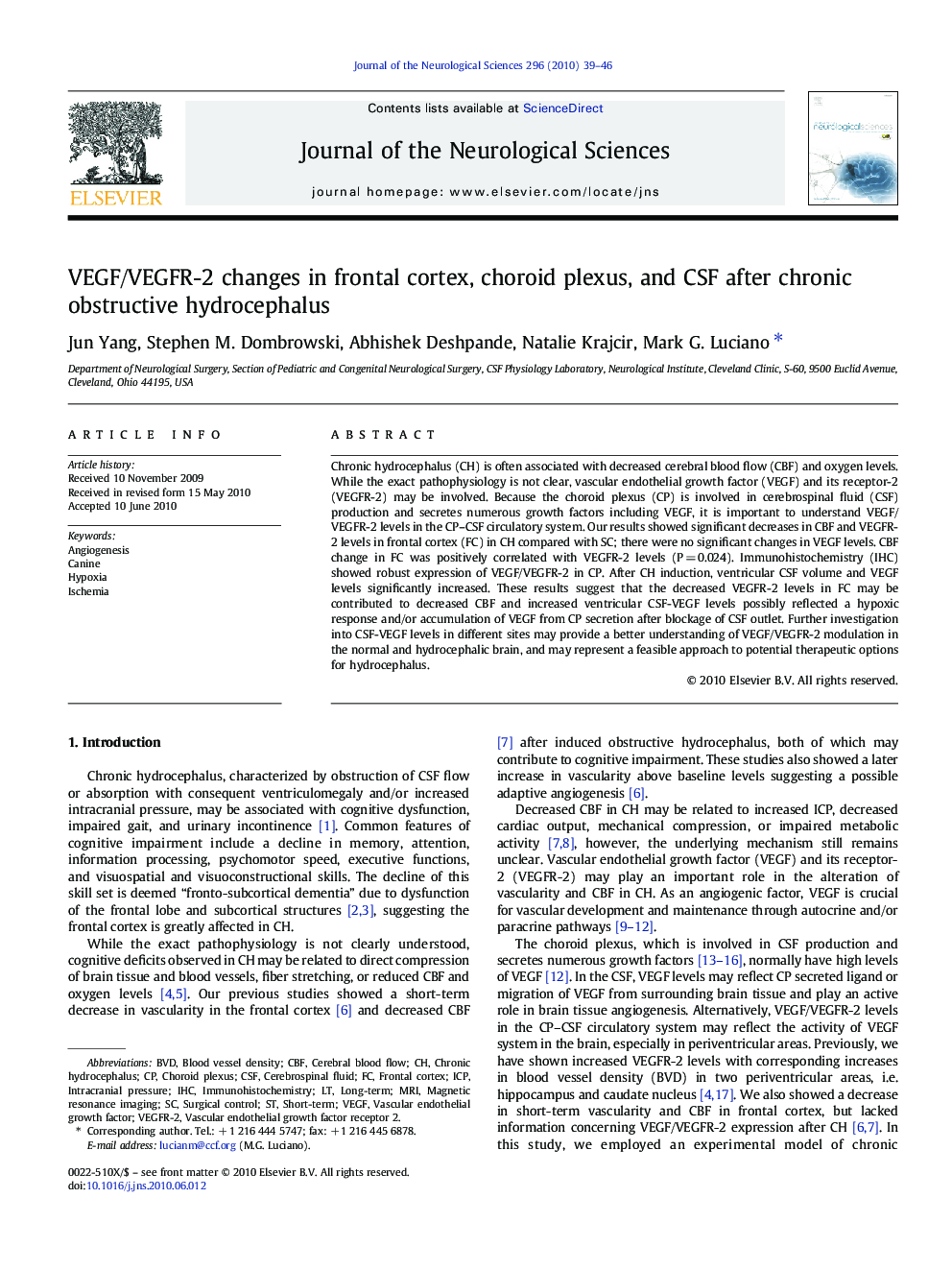| Article ID | Journal | Published Year | Pages | File Type |
|---|---|---|---|---|
| 8282938 | Journal of the Neurological Sciences | 2010 | 8 Pages |
Abstract
Chronic hydrocephalus (CH) is often associated with decreased cerebral blood flow (CBF) and oxygen levels. While the exact pathophysiology is not clear, vascular endothelial growth factor (VEGF) and its receptor-2 (VEGFR-2) may be involved. Because the choroid plexus (CP) is involved in cerebrospinal fluid (CSF) production and secretes numerous growth factors including VEGF, it is important to understand VEGF/VEGFR-2 levels in the CP-CSF circulatory system. Our results showed significant decreases in CBF and VEGFR-2 levels in frontal cortex (FC) in CH compared with SC; there were no significant changes in VEGF levels. CBF change in FC was positively correlated with VEGFR-2 levels (PÂ =Â 0.024). Immunohistochemistry (IHC) showed robust expression of VEGF/VEGFR-2 in CP. After CH induction, ventricular CSF volume and VEGF levels significantly increased. These results suggest that the decreased VEGFR-2 levels in FC may be contributed to decreased CBF and increased ventricular CSF-VEGF levels possibly reflected a hypoxic response and/or accumulation of VEGF from CP secretion after blockage of CSF outlet. Further investigation into CSF-VEGF levels in different sites may provide a better understanding of VEGF/VEGFR-2 modulation in the normal and hydrocephalic brain, and may represent a feasible approach to potential therapeutic options for hydrocephalus.
Keywords
Chronic hydrocephalusBVDVEGFR-2CBFICPAngiogenesisMRIIschemiaImmunohistochemistryIHCMagnetic resonance imagingcerebral blood flowCanineLong-termVascular endothelial growth factorVascular Endothelial Growth Factor (VEGF)intracranial pressurefrontal cortexCSFCerebrospinal fluidHypoxiaChoroid plexusShort-termvascular endothelial growth factor receptor 2
Related Topics
Life Sciences
Biochemistry, Genetics and Molecular Biology
Ageing
Authors
Jun Yang, Stephen M. Dombrowski, Abhishek Deshpande, Natalie Krajcir, Mark G. Luciano,
